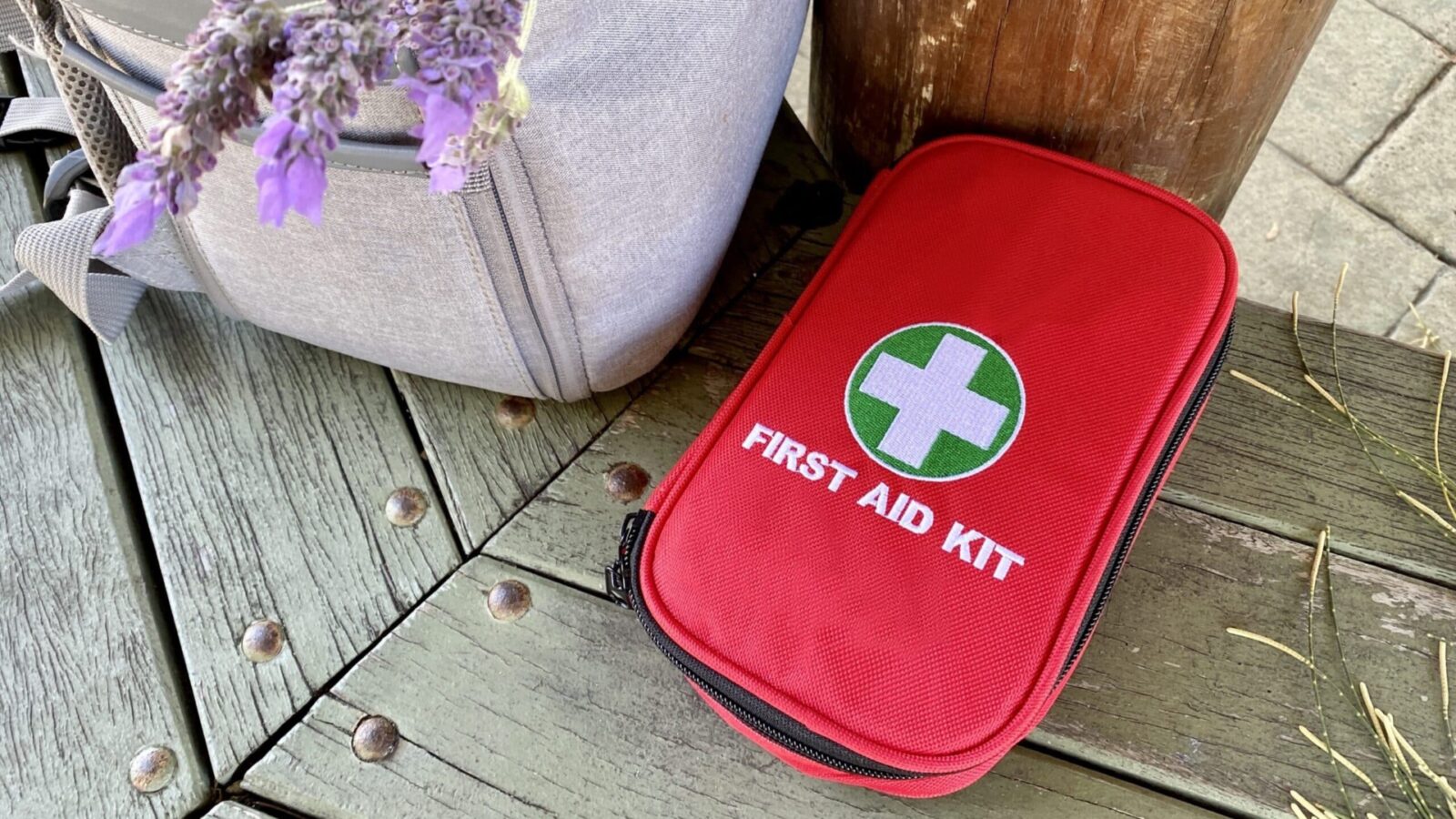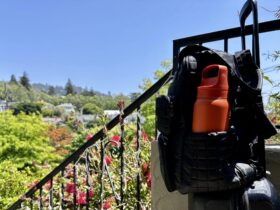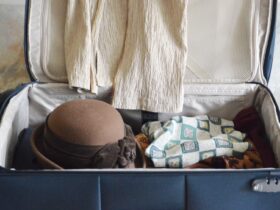“Be prepared” is a well-known motto for a reason. Whether you’re traveling near or far, it’s a good idea to pack a first aid kit. Because even the small stuff can make a big difference when you’re traveling. Case in point: you don’t want a blister to interrupt an amazing hike or a headache to disrupt a visit to a world-famous museum.
Travel Emergency First Aid Kit Essentials
Here are my top 10 recommendations for things to pack in your travel first aid kit so you’ll be ready for the most common minor injuries and ailments that come with vacation adventures.
1. Bandages
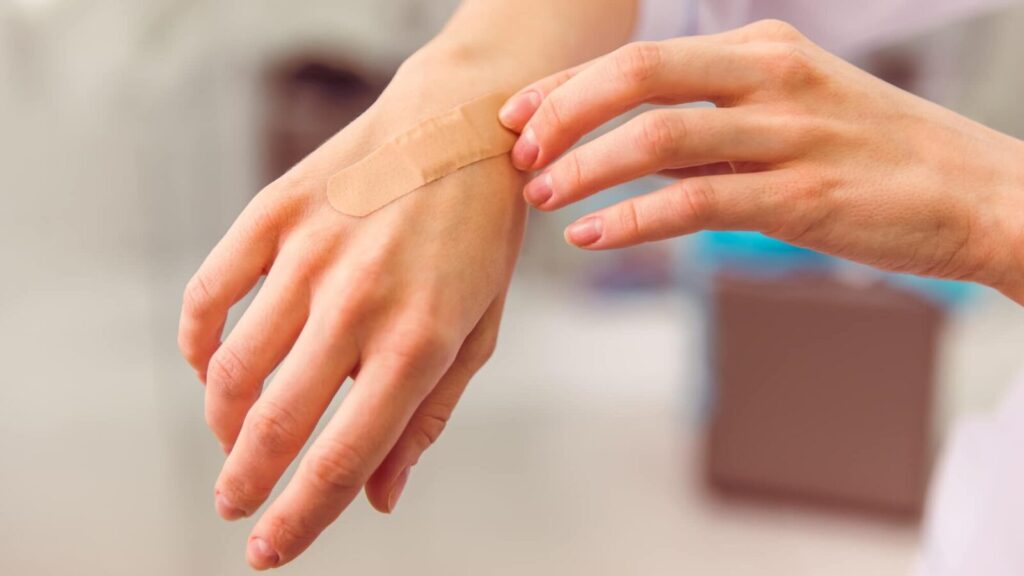
Skinned knees, paper cuts, shaving nicks, minor cuts, blisters—there are countless reasons why you might need a bandage during your travels. So make sure to have some on hand in a variety of sizes for different purposes and locations of cuts.
Having bandages made from different materials is also a smart idea. Look for some that are made of flexible fabric and others that are waterproof so you’re ready for different scenarios.
TourScoop Recommends
You can’t go wrong with bandages from Band-Aid, Curad, Welly, Nexcare, and Tru-Colour. Also, do you know about hydrocolloid blister bandages? They are padded, have a special substance that helps blisters heal more quickly, and have extra adhesion to protect skin as it heals. They’ve become a must-have for my travel first aid kit.
2. Hand Sanitizer/Wipes
It’s important to clean your hands before dealing with a cut or scrape, and if you’re on the move, access to soap and water might not be readily available. That’s why some type of hand-cleaning product is important when you create your travel first aid kit.
You’ll get the best results with hand sanitizers that contain at least 60% alcohol. But in a pinch, any kind of hand-cleaning gel, spray, or wipe is better than nothing. Individually packaged wipes take up the least amount of room in your kit, but a travel-sized bottle of hand sanitizer will also work, and can double as a way to clean your hands on the go.
TourScoop Recommends
For hand wipes, I like the options from Purell, Handzies, Wet Ones, and ALO. For hand sanitizer, Bath & Body Works, Germ-X, EO, Purell, and Everyone are all good choices.
3. Antiseptic spray and antibiotic cream
Having this dynamic duo in your emergency first aid kits helps keep small cuts from turning into bigger problems. And they’re easy to find in travel-friendly sizes that are easy to tuck into a travel first-aid kit or a day pack.
Cleaning a cut then applying antibiotic ointment or cream can help prevent infection. Find a cream that also relieves pain and/or itching and you’ll take care of even more issues at once.
TourScoop Recommends
Trusty brands for these kinds of products include Neosporin, Band-Aid, Bactine, Betadine, and CareAll.
4. Pain relievers
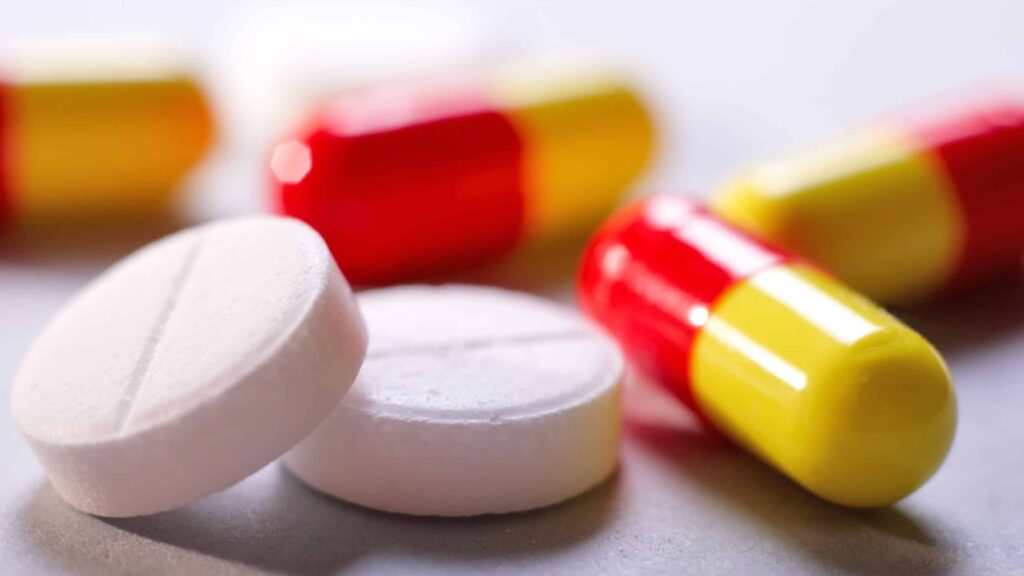
A throbbing headache or sore back can really ruin a day of sightseeing. Having pain relievers on hand helps you react quickly when problems arise—and get back to enjoying your vacation.
Consider your medical history, pre-existing health issues, and personal preferences when choosing which kinds of pain relievers to include in your emergency first aid kit. A small pill case can hold a few options and help separate the different medicines.
TourScoop Recommends
Tylenol, Advil, Aleve, and Excedrin are big names in pain relief (but generic versions often work just as well).
5. Allergy medicine
You might already know that you’re allergic to ragweed or pet dander. But you never know when something you eat, sniff, or touch might send your immune system haywire.
Having allergy medicine in your travel emergency first aid kit helps you prepare for the unexpected. There are lots of different pill options, including chewable tablets that don’t even require water, and formulations made for adults and just for kids.
TourScoop Recommends
Brands like Benadryl, Zyrtec, Claritin, and Allegra are well-known allergy fighters, and generic options exist as well. They all work a little differently, so it’s a good idea to know ahead of time which meds tend to work best for you.
6. Motion-sickness medication
If a long bus ride or rough day at sea starts making you feel queasy, having motion sickness medication at the ready can be a lifesaver. It’s also a good idea to take ahead of time if you know you’re prone to this kind of thing, so you can stay on top of your travel health.
Medications are available in non- or less-drowsy formulas and in chewable pills for maximum ease on the go. Motion-sickness patches or bands and ginger gum or chews are also helpful alternative options to add to your emergency first aid kit. And if you know you’re prone to motion sickness and are going to be in a situation on a trip that might exacerbate the issue, you can also talk to your doctor about prescription remedies.
TourScoop Recommends
I like the pill options from Dramamine, Bonine, and have also had some luck with wearing Sea-Band acupressure wristbands for dealing with minor motion sickness while traveling. If your motion sickness tends toward severe, there are also prescription medications like Scopolamine.
7. Thermometer
A fever can be associated with lots of different illnesses, and it’s good to have a temperature baseline to figure out next steps for treatment.
The thermometer you have at home might already be small enough to easily travel with, but you’ll want to consider whether you need some kind of case to protect it. Thermometer strips are another easy, on-the-go alternative that take up almost no room (and you don’t have to worry about breaking them).
TourScoop Recommends
iHealth, and NexTemp offer good options for traveling.
8. Tweezers
Tweezers are must-haves for removing splinters and bee stingers. You can buy tweezers specifically labeled for first aid, but really any stainless-steel ones with slim tips should do the trick. Just make sure to disinfect them before and after use for maximum safety.
TourScoop Recommends
Options from Fox Medical Equipment, Tweezerman, and Zizzili Basics are good choices for your emergency first aid kit.
9. Medications for Stomach Troubles
Don’t let nausea, indigestion, an upset stomach, or worse put a damper on your trip. Prepare for the worst by including some medications that tackle stomach issues in your emergency first aid kit.
Antacids help with heartburn or indigestion, while medications like Pepto Bismol help treat nausea, upset stomach, and the dreaded d-word. Include some different options and hope you don’t need them.
TourScoop Recommends
Turn to brands like Pepto Bismol, Nexium, Kaopectate, Imodium, Nauzene, Emetrol, and Tums for dealing with stomach woes.
10. Gauze and Wrap
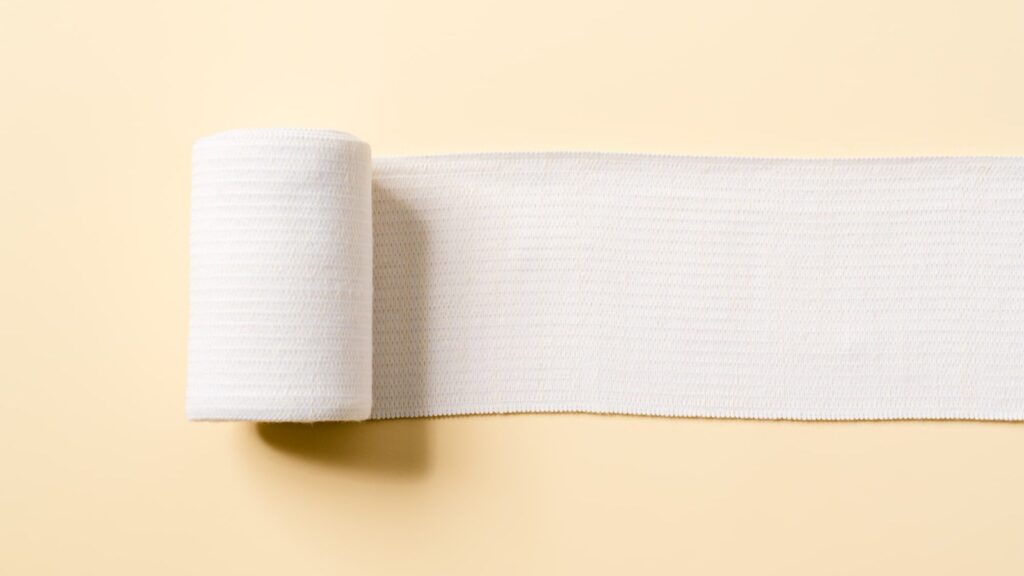
Some injuries might need more than just a bandage, so have some gauze and wrap in your kit too. Gauze doesn’t take up much room, and if you opt for self-adhesive wrap, you don’t need to also pack tape. Gauze pads (rather than rolled gauze) help keep bigger cuts clean and germ-free. And keeping a bandage wrap in your kit comes in handy for travel woes like sore knees and ankles.
TourScoop Recommends
I like brands such as Ever Ready, Band-Aid, Med Pride, and Curad for these first-aid necessities.
More Things You Might Need
Once you’ve got the basics, you can customize by destination and activities. Treatments for insect bites and travel-sized cold packs for sore muscles or inflammation are among the things you might consider adding to your travel first aid kit.



